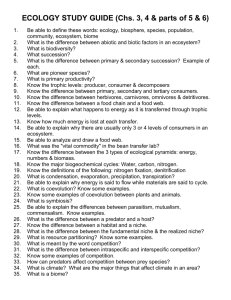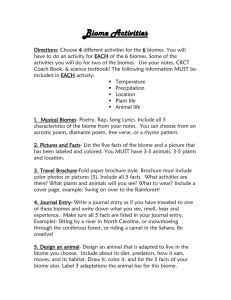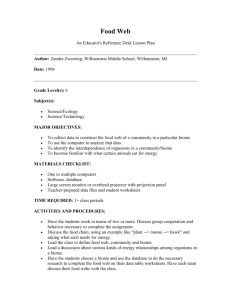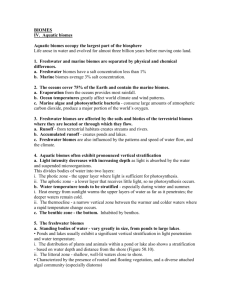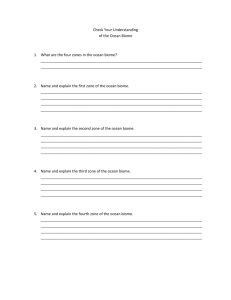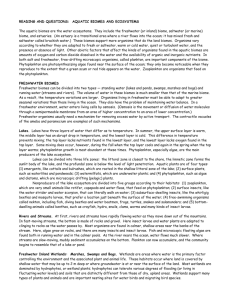Marine Biome - Course World
advertisement
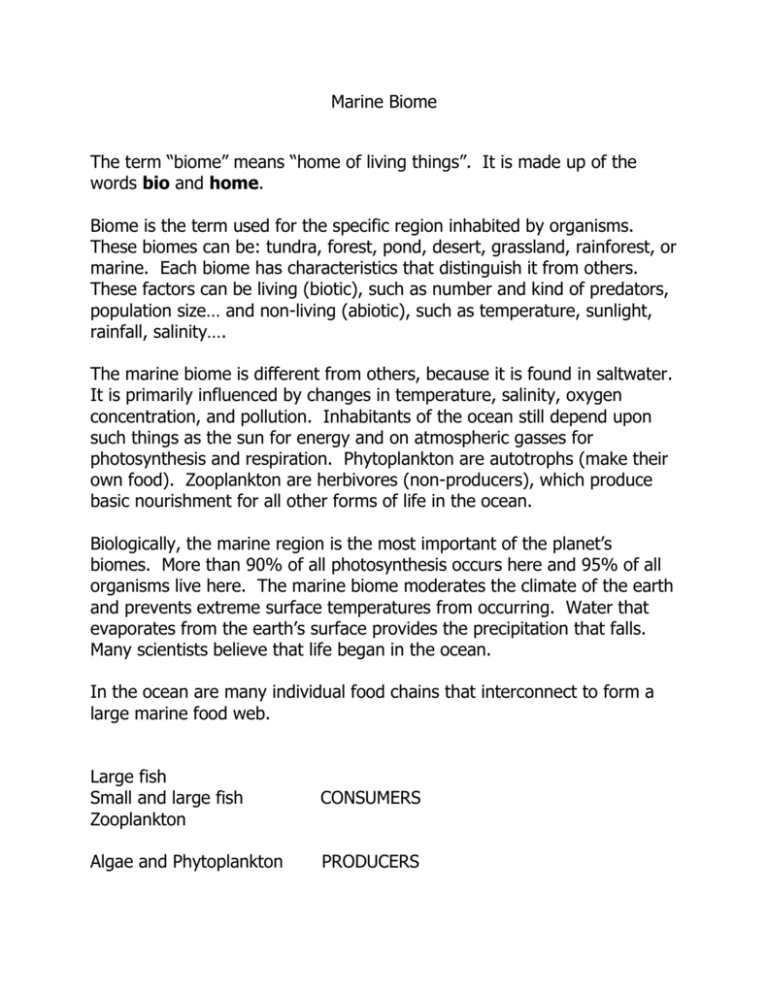
Marine Biome The term “biome” means “home of living things”. It is made up of the words bio and home. Biome is the term used for the specific region inhabited by organisms. These biomes can be: tundra, forest, pond, desert, grassland, rainforest, or marine. Each biome has characteristics that distinguish it from others. These factors can be living (biotic), such as number and kind of predators, population size… and non-living (abiotic), such as temperature, sunlight, rainfall, salinity…. The marine biome is different from others, because it is found in saltwater. It is primarily influenced by changes in temperature, salinity, oxygen concentration, and pollution. Inhabitants of the ocean still depend upon such things as the sun for energy and on atmospheric gasses for photosynthesis and respiration. Phytoplankton are autotrophs (make their own food). Zooplankton are herbivores (non-producers), which produce basic nourishment for all other forms of life in the ocean. Biologically, the marine region is the most important of the planet’s biomes. More than 90% of all photosynthesis occurs here and 95% of all organisms live here. The marine biome moderates the climate of the earth and prevents extreme surface temperatures from occurring. Water that evaporates from the earth’s surface provides the precipitation that falls. Many scientists believe that life began in the ocean. In the ocean are many individual food chains that interconnect to form a large marine food web. Large fish Small and large fish Zooplankton CONSUMERS Algae and Phytoplankton PRODUCERS


